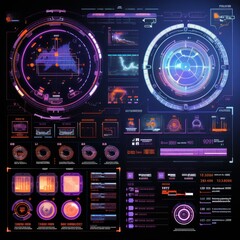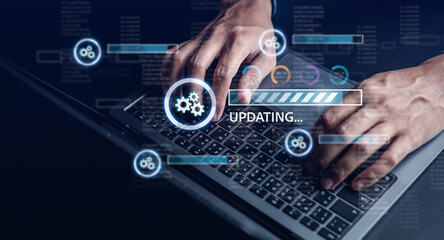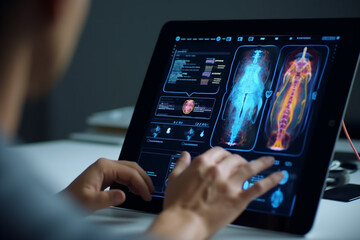In the vast digital landscape, where our devices are the knights defending the castle of our data, the security features of operating systems are the unsung heroes ensuring a stronghold against the marauding threats of the cyber world. These features not only serve as the armour for our devices but also as vigilant guards, ever watchful against potential breaches. Join us on a journey as we uncover the human-like qualities of these security features, each playing a unique role in the grand saga of digital protection.

1. User Authentication and Access Controls:
Imagine your operating system as a mediaeval castle, and user authentication as the drawbridge that permits entry only to those with the right credentials. This is where our digital gatekeepers reside. Just like a wise old sentry recognising the rightful dwellers, user authentication ensures that only you, the true lord or lady of the digital realm, gain access to your kingdom. Multi-factor authentication and biometric scans act as secret handshakes, allowing you and only you to unlock the gates.
Once inside, access controls take over as the guardians of various chambers within your castle. They decide who gets to enter the treasure room (system files) and who is confined to the courtyard (limited user privileges). With these layers of defence, your digital castle remains impenetrable to unauthorised intruders.
2. Firewalls and Network Security: Operating Systems
Picture your operating system as a city-state, connected to the vast expanse of the digital world through intricate networks. Firewalls are the towering walls surrounding your city, and network security is the vigilant army stationed on the walls, watching for any signs of incoming threats. These brave defenders filter through every bit of information that attempts to pass through the city gates.
Just as a mediaeval army would thwart invaders, firewalls monitor and control incoming and outgoing network traffic. SSL and VPN protocols serve as the encrypted banners waving high above the walls, ensuring that messages and information are shielded from prying eyes. Your digital city-state remains secure, thanks to these digital fortifications standing guard against cyber onslaughts.

3. Security Updates and Patch Management:
In the ever-evolving digital landscape, threats are like shape-shifting adversaries that constantly seek new vulnerabilities. Imagine your operating system as a castle that needs regular reinforcement to withstand the changing tactics of invaders. Security updates and patches are the watchmen patrolling the walls, tirelessly ensuring that every breach is sealed promptly.
These updates, delivered straight to your digital castle, are the missives from the royal armoury, bringing improved defences and fortified walls. Automatic updates act as the loyal squires, diligently applying these reinforcements without bothering the lord or lady of the castle. In this way, your digital stronghold is always prepared for the next wave of potential threats.
4. File Encryption and Data Protection:
In the heart of your digital castle lies the royal archives, where the most precious data resides. File encryption acts as the mystical spell that cloaks these treasures in an unreadable script. Only the chosen ones with the right decryption keys can unveil the secrets within.
Whether it’s a dragon hoarding gold or a cybercriminal seeking sensitive information, encryption ensures that even if the treasure is found, it remains indecipherable. Your digital archives are protected thanks to these guardians of encryption, ensuring the confidentiality and integrity of your most valuable data.

5. Antivirus and Anti-Malware Integration:
Within the digital kingdom, malware and viruses are the dark knights seeking to infiltrate and wreak havoc. Enter the antivirus and anti-malware tools as the valiant knights defending your digital honor. These gallant protectors embark on quests through the vast landscapes of your digital kingdom, tirelessly scanning files and applications for the telltale signs of malevolent code.
Much like the knights of the Round Table, these tools stand guard against the sinister forces that threaten to corrupt the very core of your operating system. Users, armed with their trusty shields (firewalls) and swords (antivirus tools), join the noble quest to keep the digital kingdom safe from the encroaching darkness.
6. Virtualization and Sandboxing:
Picture your operating system as a grand laboratory where new potions (applications) are concocted regularly. However, not all potions are benign; some might turn out to be volatile elixirs that could wreak havoc if unleashed. Virtualization and sandboxing act as the alchemists’ workbenches, providing a controlled environment for these experiments.
Much like skilled alchemists, these features create isolated spaces, preventing the fallout from one experiment from affecting the entire laboratory. Users, wearing the robes of cautious wizards, can test and run applications in these controlled environments, ensuring that only the safest concoctions make their way into the digital kingdom.

7. Audit Trails and Logging:
In the vast tapestry of digital history, every event leaves a mark. Imagine audit trails and logging as diligent chroniclers, penning down every action within the kingdom. These meticulous scribes document the comings and goings, creating a detailed narrative that serves as a historical record.
Much like the ancient scrolls preserving the tales of the old, these logs play a crucial role in unravelling mysteries and understanding the chain of events in case of a breach. Security teams, armed with the knowledge gleaned from these chronicles, can identify anomalies and thwart potential threats, ensuring the ongoing safety of the digital kingdom.
8. Biometric Security and Facial Recognition:
In the grand court of your digital kingdom, imagine biometric security as the royal herald, announcing the arrival of only the true lord or lady. Fingerprint scanners, facial recognition, and iris scans act as the royal insignia, verifying the identity of the digital aristocracy.
Much like the herald ensuring that only the rightful ruler enters the throne room, biometric security features guarantee that only the authorised user gains access to the digital domain. This personalised touch adds an extra layer of security, making it nearly impossible for impostors to claim the digital crown.

9. Secure Boot and Code Signing:
As the digital dawn breaks, imagine your operating system as a realm awakening from slumber. Secure Boot is the royal decree that only authenticated and signed entities shall be allowed to participate in the day’s proceedings. Code signing acts as the royal seal, verifying the legitimacy of software and ensuring that no malicious actors slip through the cracks.
Much like the vigilant guards at the city gates, these features prevent the execution of unauthorised code, ensuring that the digital day begins in a trusted and secure environment. Users, confident in the legitimacy of their digital realm, can go about their activities without fear of clandestine infiltrations.
10. Security Awareness and User Education:
In the grand hall of digital wisdom, imagine security awareness and user education as the wise sages imparting their knowledge to the kingdom’s inhabitants. Interactive pop-up notifications and user-friendly interfaces act as gentle mentors, guiding users through the nuances of digital security.
Much like the wise elders sharing their stories with the younger generation, these features empower users to make informed decisions and navigate the digital landscape with confidence. In this symbiotic relationship, users become the
Related article:
Operating Systems: A Dive into the Soul of Popular Operating Systems
Cybersecurity: Protocols and Data Communication Unveiled 2023

2 thoughts on “Operating Systems: Unveiling the Security Features in Operating Systems 2023”